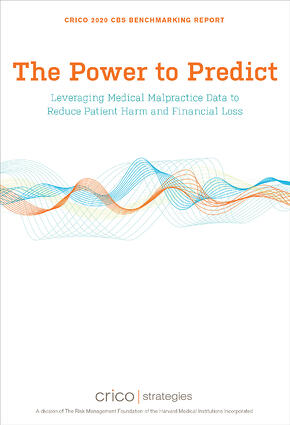A point made by a keynote speaker at the 2018 American Hospital Association (AHA) Leadership Summit in San Diego has really stuck with me over the years, and I believe it has become more relevant today. The speaker, a health system CEO, observed that many hospital executives were changing their language when describing their organization’s commitment to data and analytics. They were shifting from calling themselves data-driven to being data-informed Subtle but very meaningful nuance.
DATA-DRIVEN VS. DATA-INFORMED
The speaker explained that the term data driven is often interpreted by clinicians and staff that data is the new truth, replacing their professional judgment, experience and freedom in decision-making. Are data and analytics sending the message that human judgment cannot be trusted? In this context, will my annual review rest on my compliance with algorithms?
Next he turned to the term data informed and talked about how it sent the message that people make decisions, but data can and must now inform those decisions. This tension between data-driven and data-informed represents change and evolution, the same tension that has accompanied nearly every technological innovation known to man. My parents still yell into their cellphones because they are small and have no cord attached to the wall. They have not conquered the tension around old ways and new ways to communicate.
DATA AND THE POWER TO PREDICT
 This year’s Benchmarking Report was designed to demonstrate how an analytical model applied to deep, rich medical malpractice data can generate some predictions that can inform medical professional liability (MPL) professional and health care provider decisions. More specifically, while anyone doing analytics for the purposes of risk management is, by definition, doing predictive analytics this year’s Report represents how data and analytics can credibly and simply inform how claims managers can approach a tough claim, clinical leaders can get out in front of future risks to patients, and how business leaders can avoid future MPL losses. It demonstrates the power to predict.
This year’s Benchmarking Report was designed to demonstrate how an analytical model applied to deep, rich medical malpractice data can generate some predictions that can inform medical professional liability (MPL) professional and health care provider decisions. More specifically, while anyone doing analytics for the purposes of risk management is, by definition, doing predictive analytics this year’s Report represents how data and analytics can credibly and simply inform how claims managers can approach a tough claim, clinical leaders can get out in front of future risks to patients, and how business leaders can avoid future MPL losses. It demonstrates the power to predict.
For example, analyzing the Candello Data, the Report found that the odds of an MPL case closing with an indemnity payment increase by:
- 145% when a policy or protocol is not followed
- 85% when there are indications of inadequate patient assessment
- 76% when there are indications of insufficient documentation
Do these findings tell claims managers, clinicians, or business leaders what to do? Are they a threat or an asset? That depends on who you are, your comfort with data, your self-confidence and wisdom, and your organization’s data culture. They should prompt any provider or insurer to at least appreciate the importance of policy and procedure adherence, thorough patient assessments, and clear and complete documentation. Without improvement to these processes, adverse events that lead to claims will continue and will substantially increase the odds of avoidable financial loss. It is data and analytics that permit the word avoidable to be used with confidence.
While Candello has long been appreciated for its unique lens into the clinical factors behind a malpractice claim and what can be learned from them this year’s Report showcased how those clinical factors correlate to financial, operational and insurance factors. Such a correlation is sorely needed in health care data so that clinical leaders can appreciate their risks with a financial context, and business and insurance leaders can appreciate the clinical context behind their risks, claims and losses.
There are many data sources that capture elements of risk, harm, cost and loss. But very few capture and can correlate all of them. Candello does, drawing from 450,000 malpractice cases, it is supported by a living taxonomy and a continuous flow of new data that allow us to refer to Candello as a learning engine. This Report demonstrates how predictive modeling can be applied to a dataset like Candello that is large enough to predict with reliable accuracy what harm could happen and what loss could be avoided by being informed by data.
How are you using data to inform decisions?

